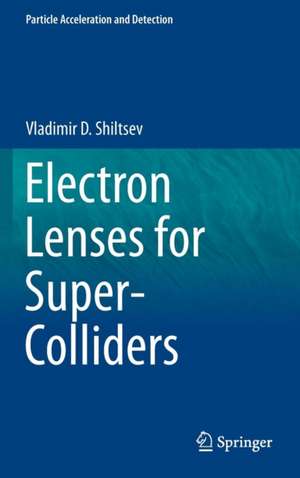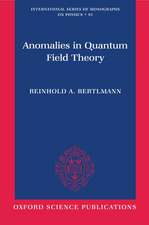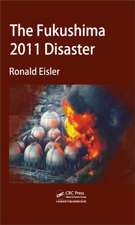Electron Lenses for Super-Colliders: Particle Acceleration and Detection
Autor Vladimir D. Shiltseven Limba Engleză Hardback – 22 noi 2015
| Toate formatele și edițiile | Preț | Express |
|---|---|---|
| Paperback (1) | 382.95 lei 6-8 săpt. | |
| Springer – 23 aug 2016 | 382.95 lei 6-8 săpt. | |
| Hardback (1) | 390.25 lei 6-8 săpt. | |
| Springer – 22 noi 2015 | 390.25 lei 6-8 săpt. |
Din seria Particle Acceleration and Detection
-
 Preț: 386.06 lei
Preț: 386.06 lei -
 Preț: 301.08 lei
Preț: 301.08 lei - 18%
 Preț: 780.06 lei
Preț: 780.06 lei -
 Preț: 455.24 lei
Preț: 455.24 lei -
 Preț: 426.72 lei
Preț: 426.72 lei - 18%
 Preț: 891.33 lei
Preț: 891.33 lei - 15%
 Preț: 583.93 lei
Preț: 583.93 lei - 18%
 Preț: 1112.48 lei
Preț: 1112.48 lei - 15%
 Preț: 656.89 lei
Preț: 656.89 lei - 24%
 Preț: 749.62 lei
Preț: 749.62 lei - 24%
 Preț: 791.78 lei
Preț: 791.78 lei - 15%
 Preț: 643.34 lei
Preț: 643.34 lei - 15%
 Preț: 636.45 lei
Preț: 636.45 lei - 24%
 Preț: 644.82 lei
Preț: 644.82 lei - 18%
 Preț: 1230.03 lei
Preț: 1230.03 lei - 15%
 Preț: 645.96 lei
Preț: 645.96 lei - 18%
 Preț: 1405.57 lei
Preț: 1405.57 lei - 15%
 Preț: 645.79 lei
Preț: 645.79 lei -
 Preț: 150.66 lei
Preț: 150.66 lei - 15%
 Preț: 649.54 lei
Preț: 649.54 lei - 15%
 Preț: 537.29 lei
Preț: 537.29 lei - 20%
 Preț: 582.50 lei
Preț: 582.50 lei - 24%
 Preț: 743.51 lei
Preț: 743.51 lei - 24%
 Preț: 831.57 lei
Preț: 831.57 lei - 18%
 Preț: 735.51 lei
Preț: 735.51 lei - 18%
 Preț: 1007.03 lei
Preț: 1007.03 lei - 18%
 Preț: 963.91 lei
Preț: 963.91 lei - 24%
 Preț: 687.50 lei
Preț: 687.50 lei
Preț: 390.25 lei
Nou
Puncte Express: 585
Preț estimativ în valută:
74.68€ • 78.23$ • 61.89£
74.68€ • 78.23$ • 61.89£
Carte tipărită la comandă
Livrare economică 08-22 aprilie
Preluare comenzi: 021 569.72.76
Specificații
ISBN-13: 9781493933150
ISBN-10: 1493933159
Pagini: 250
Ilustrații: XV, 188 p.
Dimensiuni: 155 x 235 x 20 mm
Greutate: 0.47 kg
Ediția:1st ed. 2016
Editura: Springer
Colecția Springer
Seria Particle Acceleration and Detection
Locul publicării:New York, NY, United States
ISBN-10: 1493933159
Pagini: 250
Ilustrații: XV, 188 p.
Dimensiuni: 155 x 235 x 20 mm
Greutate: 0.47 kg
Ediția:1st ed. 2016
Editura: Springer
Colecția Springer
Seria Particle Acceleration and Detection
Locul publicării:New York, NY, United States
Public țintă
ResearchCuprins
From the Contents: Part I Colliding Beams Method.- Beam Dynamics Issues in Hadron Supercolliders.- Part II Technology of Electron Lenses.- Major Requirements.- Part III Electron Lenses for Beam-Beam Compensation.- Long-range beam-beam compensation.- Part IV Electron Lenses for Beam Halo Collimation.- Part V Electron Lenses for Space-Charge Compensation.- Theory and Modeling of the SCC with Electron Lenses.- Part VI Other Applications of Electron Lenses.- Electron Lenses for Slow Extraction from Proton Synchrotrons.
Recenzii
“With an energetic writing style, in this book Vladimir Shiltsev presents a novel device for accelerators and storage rings. … the book is an excellent entry point for anyone who would like to become familiar with the concepts, technology and possible application of electron lenses. It is also a useful reference for many formulas, allowing for fast estimates, and for the published work on this topic – up to the date of publication.” (Wolfram Fischer, CERN Courier, cerncourier.com, November, 2016)
Notă biografică
Vladimir Shiltsev received his PhD in Accelerator Physics in 1994 from Budker Institute of Nuclear Physics (Novosibirsk, Russia). From 1993 to 1995 he was a visiting scientist at the SSC Lab (Dallas, TX) and DESY (Hamburg, Germany). He has been at Fermilab since 1996, where he started the Tevatron Electron Lens project, and then was Head of the Tevatron Department from 2001 to 2005. He is also Founding Director of Fermilab’s Accelerator Physics Center (2007-present), Fellow of the American Physical Society, and Winner of 2004 European Accelerator Prize from European Physical Society.
Textul de pe ultima copertă
This book provides a comprehensive overview of the operating principles and technology of electron lenses in supercolliders. Electron lenses are a novel instrument for high energy particle accelerators, particularly for the energy-frontier superconducting hadron colliders, including the Tevatron, RHIC, LHC and future very large hadron colliders. After reviewing the issues surrounding beam dynamics in supercolliders, the book offers an introduction to the electron lens method and its application. Further chapters describe the technology behind the electron lenses which have recently been proposed, built and employed for compensation of beam-beam effects and for collimation of high-energy high-intensity beams, for compensation of space-charge effects and several other applications in accelerators. The book will be an invaluable resource for those involved in the design, construction and operation of the next generation of hadron colliders.
Caracteristici
Offers a unique overview of the principles of electron lens systems and their application in supercolliders Written by a pioneer in the practical use of electron lenses in supercolliders Includes a review of the complex beam dynamics issues arising in high energy particle accelerators Treats theoretical principles, practical applications and design considerations Describes practical experience and issues arising in the implementation of electron lens technology in hadron colliders












